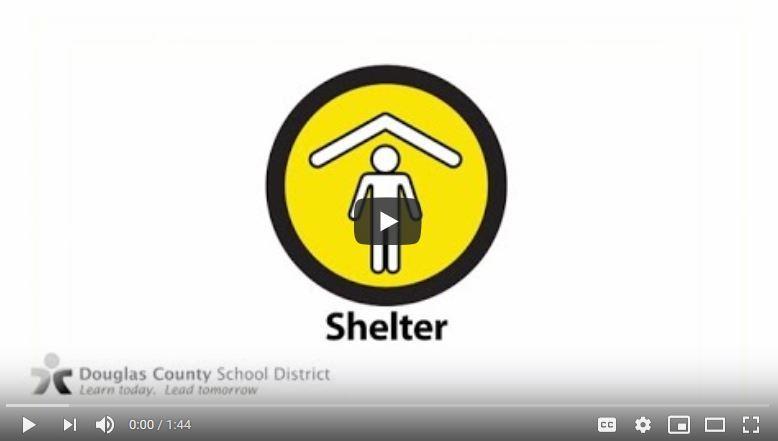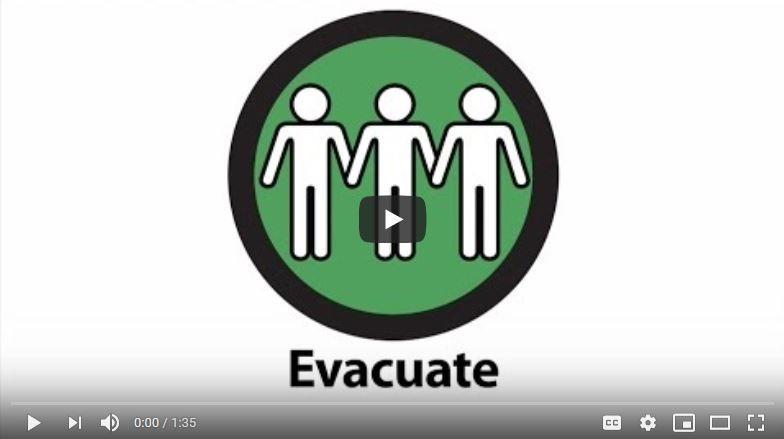Standard Response Protocol
To assist site administrators, DCSD schools and law enforcement utilize a system called Standard Response Protocol (SRP) to guide administrators, staff, classrooms, and individual students through standardized responses regardless of the threat. This all-hazards approach focuses not on the incident itself, but rather on the required response by those involved.
The SRP provides simple concise actions to be taken regardless of whether a tornado has been spotted nearby or criminal activity has been reported or a wildfire is on the horizon. Instead of initiating different actions for each scenario, the SRP utilizes these actions for all potential threats. These are the actions:
- Hold
- Secure
- Lock Down
- Evacuate
- Shelter
What to Do During Any SRP Action
When any action within the Standard Response Protocol is activated, we ask for our families’ assistance in three ways: Stay Home, Stay Informed and Be Ready!
Hold
Action: Hold in your room or area. Clear the halls.
Hold is called when the hallways need to be kept clear, even during class changes.
Action: Hold in your room or area. Clear the halls.
Hold is called when the hallways need to be kept clear, even during class changes.
Secure
ACTION: Get inside. Lock outside doors.
Potential danger or active danger OUTSIDE the building, students and staff pulled inside the building, perimeter secured, business as usual.
Secure calls for increased situational awareness when there is a potential threat or active threat outside the building, but class and school business will otherwise be conducted as usual. All staff and students are brought inside and outside doors are all locked. A Secure can be called by the district or a school administrator. A Secure can be called when staff or students notice something weird or strange. A Secure could be the response to a violent person or incident in the community near your school. During a Secure, teachers will take roll and notify the incident commander of missing or extra students. A Secure during dismissal will result in a Controlled Release dismissal procedure.
Shelter
ACTION: Follow the directionsPotential danger OUTSIDE the building, students and staff follow instructions specific to circumstances.
This action is similar to “shelter in place;” however this SRP gives specific instructions within the action. For example instead of just announcing shelter, the command may be “Shelter for tornado, drop cover and hold”. The command will be to shelter, what we are sheltering from, and the specific self protection action to do. Some examples of announcements could include:
|
Earthquake |
Tornado |
Hazmat |
Outside Fire |
Silence |
Evacuate
ACTION: Follow the directions
Potential danger or active danger INSIDE the building, students and staff follow instructions specific to circumstances.
Evacuate means moving students in an orderly fashion from point A to point B. A fire drill is really “evacuate out of the building.” The order to evacuate will always be followed by a location. (e.g., evacuate to the gym, evacuate to the parking lot, etc.). Administrators and staff work together to quickly, quietly, and safely evacuate students to the evacuation point. Students and staff will leave stuff (backpacks, books, etc) behind. Instructions detailing specific actions during the evacuation may take place such as holding hands, covering heads, and/or crawling. Once the location has been safely reached during an Evacuation, teachers will take roll and notify the incident commander of missing or extra students.Lock Down
ACTION: Locks, lights, out of sight
Active danger INSIDE the building, rooms locked, staff and students inside rooms and out of line of sight.
Lock Down is the protocol used to secure individual rooms and keep students quiet and in place. Teachers will lock classroom doors and turn lights out. In addition, students and staff will move away from corridor line of sight and maintain silence. The teacher will take roll and account for all students. Occupants of rooms will not unlock their rooms for anything or anyone. When the incident is over, a responsible person capable of unlocking the room from out in the hall (administrator, custodian, law enforcement, etc) will unlock the door and brief the occupants.
Reunification
In some cases, the student may be moved to another location, like a nearby school or community center. When asked, parents and guardians need to come to the reunification check-in location.
Parents and guardians will be asked to fill out a reunification card and to show photo identification. It is crucial that we have an accountable exchange, in which a student is only released to an authorized parent or guardian. Please be patient. This process can take time.
Please note: Families are encouraged to send only one adult representative rather than multiple family members.
Finally, if for any reason students have self-evacuated from a situation, it is important for them to let parents or guardians know they are safe. The families will then need to let DCSD know they are accounted for, so that the District knows they are safe. Often the District will share a number to facilitate this communication.


